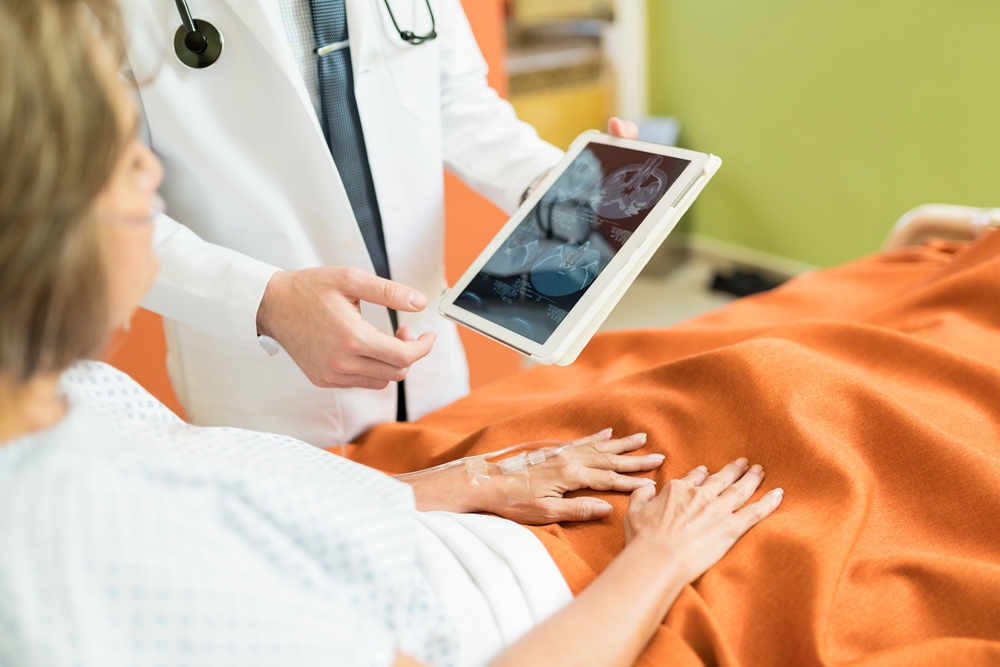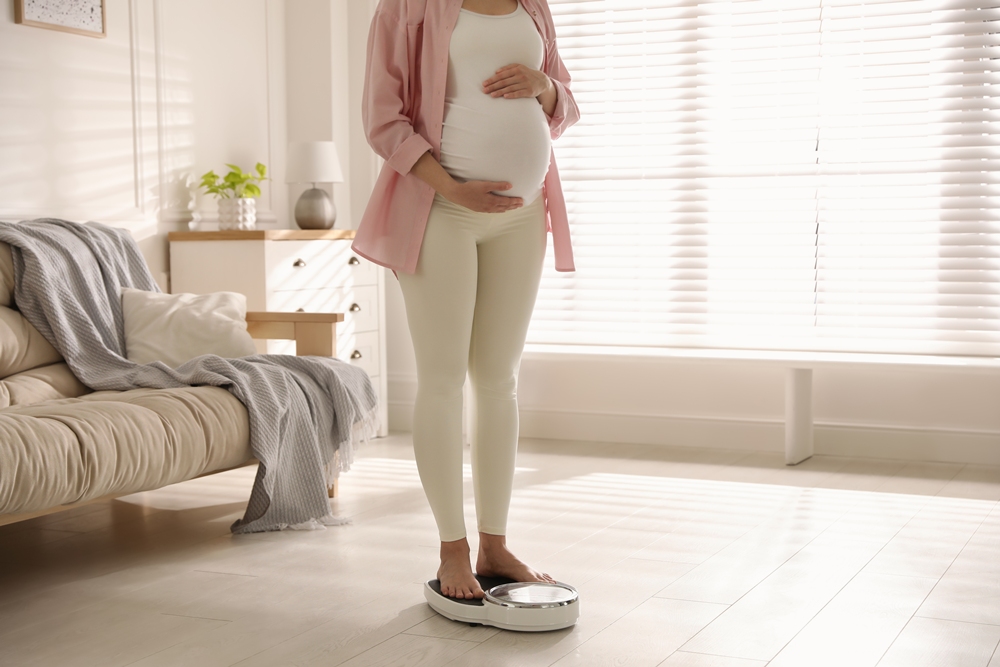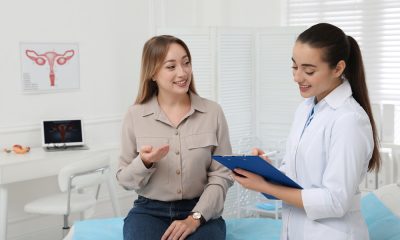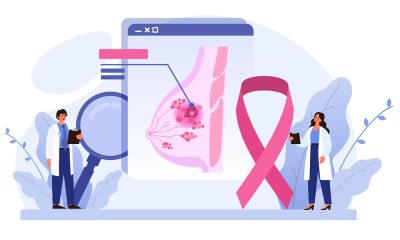Fertility
One in four Gen Z women were not taught how to use menstrual products before starting their periods

One in four Gen Z women were not taught how to use menstrual products before experiencing their first period, according to new research.
The survey of 1,000 adults who have periods, commissioned by Initial Washroom Hygiene, found that nearly a quarter (23 per cent) of those aged 25 and under were left to their own devices to discover how to use menstrual products.
This led to 27 per cent turning to the internet for help, a third (33 per cent) simply figuring it out “through trial and error” and 40 per cent relying solely on instructions on or in the packaging of menstrual products.
However, modern young women are faring slightly better than their older counterparts, with 34 per cent of millennials claiming they weren’t taught about menstrual products before they began menstruating, along with 56 per cent of Gen X.
The consequence of this lack of education can have a negative effect on young women and girls.
25 per cent of those polled have experienced an embarrassing leak through their clothes in public as a result of a lack of knowledge about menstrual products, while 16 per cent have been left in pain due to not using them correctly.
Nearly one in ten (8 per cent ) have been forced to leave school or a social occasion (7 per cent) early to deal with their period.
To help close this education gap, Initial Washroom Hygiene has teamed up with Obstetrician and Gynaecologist Dr Shazia Malik, to create educational videos, that provide advice and tips on how to safely use the most commonly used period products, and bust some of the most common menstruation myths.
The videos will be made available for women and girls to discreetly access for free, via QR codes on posters in toilet cubicles and social media links.
Dr Shazia Malik said: “A lack of education on period products and menstruation can be detrimental at any age and can be daunting for those who haven’t been taught fully growing up.
“That’s why I’ve worked with Initial Washroom Hygiene to create these simple guides to give helpful insight on how to use some of the most common period products, as no one should have to face embarrassment or shame from starting their periods”.
The research also revealed 16 per cent of those polled weren’t aware of disposable sanitary pads before starting their periods, while 29 per cent hadn’t been told about tampons.
Among the topics women wish they had been taught more about before starting their periods were how they would feel and the symptoms of premenstrual syndrome (40 per cent), what to do if they leaked (39 per cent) and what was happening to their body (32 per cent).
More than a fifth (22 per cent) would also have liked more information on the consequences of using the wrong products, while 21 per cent wish they were simply told the age range at which they would be likely to start menstruating. 53 per cent admitted they would have been too embarrassed to ask their teachers for help answering some of their questions, while 36 per cent even said the same about their parents.
As a result, many of those polled admitted to believing various misconceptions about menstruation.
37 per cent were under the impression you can’t swim while on your period, 27 per cent mistakenly thought a period comes every 28 days for all women and 26 per cent believed you couldn’t have sex during that time of the month.
Other wrongly believed statements included not being able to get pregnant on your period (24 per cent), that people can tell when you are menstruating (14 per cent) and even that you cannot have a bath (12 per cent).
Sian Walkling, from Initial Washroom Hygiene, said: “There is a clear gap in the education that young
women are receiving regarding their menstrual cycle, which is having a serious effect on their first period experiences.
“We’re determined to help bridge this gap and make using period products easier, and less intimidating for menstruators of all ages.
“And as older women will hopefully become a source of knowledge for their daughters, nieces, and grandchildren this education must be available to all.”
Diagnosis
Scientists turn human skin cells into eggs in IVF breakthrough

Researchers have created human eggs from skin cells, in a breakthrough that could transform IVF treatment for couples who have no other options.
The work remains at an early stage, but if scientists can refine the process it could allow women who are infertile due to age, illness or medical treatment to have genetically related eggs.
The same technique could also be used to make eggs for same-sex male couples.
Prof Shoukhrat Mitalipov, who led the research at Oregon Health and Science University in Portland, said: “The largest group of patients who might benefit would be women of advanced maternal age.
“Another group are those who have been through chemotherapy because that can affect their ability to have viable eggs.”
While women are expected to be the primary beneficiaries, the skin cells used to make eggs need not come from potential mothers.
“We used female skin cells in this study, but you could use skin cells from males as well,” Mitalipov told the Guardian.
“You could make eggs for men, and that way, of course, this would be applicable to same-sex couples.”
The work draws on cloning techniques pioneered in the 1990s at the Roslin Institute in Scotland.
A team led by the late Ian Wilmut used somatic cell nuclear transfer – a process that moves genetic material between cells – to create Dolly the sheep.
The procedure involved removing the nucleus (the cell’s control centre containing genetic information) from an adult sheep cell and placing it into a sheep egg that had had its own nucleus removed.
The resulting embryo was carried to term in a surrogate mother.
The Oregon team took a similar approach by collecting skin cells from women and removing the nucleus from each.
The nucleus, which contains 46 chromosomes carrying around 20,000 genes that make up the human genetic code, was placed into healthy donor eggs that had had their own nuclei removed.
The main challenge for scientists was that healthy human eggs normally contain only 23 chromosomes.
Another 23 come from sperm during fertilisation, producing the full set of 46 required for development into an embryo and eventually a baby.
Writing in Nature Communications, the Oregon team described how they tackled the problem of excess chromosomes.
After fertilising the eggs with sperm, they activated them using a compound called roscovitine.
This caused the eggs to move roughly half of their chromosomes into a structure called a polar body – a small cell formed during egg development – leaving the remaining chromosomes to pair with those from the sperm.
In a healthy fertilised human egg, 23 chromosomes from the mother pair with 23 from the father.
However, the Oregon team found that in their lab-created eggs, the chromosomes paired up at random. This led to embryos with the wrong number of chromosomes or incorrect pairings.
“These abnormal chromosome complements would not be expected to result in a healthy baby,” said Prof Paula Amato, a co-author of the study at Oregon.
The team is now working to refine the process.
Of the 82 eggs created, fewer than 10 per cent developed to the stage at which embryos are typically transferred during IVF.
None were cultured beyond six days, suggesting the process remains inefficient.
Mitalipov described the work as a “proof of concept” with more challenges ahead. Perfecting the method and proving its safety in patients could take another decade.
“I think it’s going to be harder than what we’ve done over the years thus far, but it’s not impossible,” he said.
Other scientists praised the breakthrough.
Prof Richard Anderson of the University of Edinburgh said: “Many women are unable to have a family because they have lost their eggs, which can occur for a range of reasons including after cancer treatment.
“The ability to generate new eggs would be a major advance.
“There will be very important safety concerns, but this study is a step toward helping many women have their own genetic children.”
News
NHS introduces new ovarian cancer screening for high-risk women

High-risk women can now delay ovary removal surgery through NHS screening, helping them preserve fertility and avoid early surgical menopause.
The ROCA test tracks women with BRCA gene mutations every four months, monitoring cancer risk markers instead of requiring immediate preventive surgery.
University College London Hospitals NHS Foundation Trust has begun rolling out the programme, with plans for national expansion after approval from the National Institute for Health and Care Excellence (NICE).
BRCA1 and BRCA2 mutations greatly increase the risk of breast and ovarian cancer. Normally, BRCA genes repair damaged DNA, but when faulty they allow tumours to grow more easily.
Breast cancer screening with mammograms is long established, but until now there has been no equivalent for ovarian cancer. Women carrying BRCA mutations were typically advised to have their ovaries removed preventively – a step that ends fertility and triggers menopause immediately.
The ROCA test monitors changes in CA125, a blood protein that can indicate ovarian cancer when levels rise.
By testing every four months, women can keep track of their risk while delaying surgery if they wish.
Professor Adam Rosenthal, consultant gynaecologist at UCLH, said the test was designed as a damage-limitation option for women not ready for surgery.
A raised result means patients can reconsider surgery, while regular monitoring increases the chance of detecting cancer early, when outcomes are better.
Natasha Wray learned she carried the BRCA gene after breast cancer treatment at 36. She was advised to have her ovaries removed but refused.
She said: “I was 36 at the time, and I said, absolutely not. I’d just gone through seven rounds of chemo, extensive surgery, and had sort of a year and a half, two years of my life caught up in cancer treatment, and I just wanted to be left alone.
“And I also didn’t want to go through a surgical menopause in my mid-30s.
“I also very much wanted to be a mum, so I definitely wanted to hold on to any fertility that I did have.
She initially paid privately for the ROCA tests and admitted they brought anxiety.
But Rosenthal said the screening helps keep the decision about surgery at the forefront for patients.
At 41, Wray had a baby. Two years later, her test results showed raised CA125 levels, and she delayed before eventually choosing surgery.
“It wasn’t easy,” she said.
“But I do think it’s really important as well that women’s bodies aren’t just seen as baby making bodies and machines.
“I very much wanted to be a mother. That wasn’t my sole purpose for holding onto my ovaries.
“It was very personal and it actually had nothing to do with anybody else. It was very much me, how I felt in my body, what had already been felt like to me, taken from me.”
NICE has approved the ROCA test for BRCA carriers, with health officials highlighting its cost-effectiveness and aiming to make it available across England.
Pregnancy
Preconception BMI linked to fertility and miscarriage risks

Preconception BMI outside the healthy range is linked to longer time to pregnancy and higher miscarriage risk, new research has revealed.
The study followed 3,033 pregnancy or preconception episodes among couples in Rotterdam between August 2017 and July 2021, examining how body mass index (BMI) – weight relative to height – affects fertility.
Women had a median age of 31.6 years and men 33.4. BMI categories were underweight (under 18.5), normal (18.5–24.9), overweight (25–29.9) and obese (30 or greater).
Fecundability – the chance of conceiving in one menstrual cycle – declined with each BMI unit for both sexes.
Women with obesity had a 28 per cent lower chance of conceiving than women of normal weight, while overweight women had a 12 per cent reduction.
Overweight and obese men had an 11 per cent reduction compared with normal-weight men.
The researchers wrote: “A better understanding of the separate and combined associations of BMI in women and men with fertility and miscarriage outcomes is needed to develop novel targeted population strategies to optimise BMI from the preconception period onward.”
Of the cases studied, 17.8 per cent of women were classed as subfertile, meaning conception took more than 12 months. In addition, 11.3 per cent of pregnancies ended in miscarriage, defined as loss before 22 weeks’ gestation.
Underweight women had nearly twice the risk of subfertility compared with normal-weight women.
Overweight women faced a 35 per cent higher risk, while women with obesity had a 67 per cent higher risk.
Miscarriage risks were also higher outside the healthy BMI range: overweight women had a 49 per cent higher risk and women with obesity a 44 per cent higher risk than normal-weight women.
The median time to pregnancy across all participants was 3.7 months. The study also recorded use of assisted reproductive technology, including in vitro fertilisation, among couples struggling to conceive.
The investigators concluded: “Optimising BMI from the preconception period onward in women and men might be an important strategy to improve fertility and pregnancy outcomes.”

 Diagnosis4 days ago
Diagnosis4 days agoScientists turn human skin cells into eggs in IVF breakthrough

 Menopause5 days ago
Menopause5 days agoFDA plans to revise black box warning on menopause hormone therapies

 News5 days ago
News5 days agoDaily pill could delay menopause ‘by years,’ study finds

 News4 days ago
News4 days agoMothers’, not fathers’, mental health directly linked to their children’s, study shows

 News3 days ago
News3 days agoManagers still unprepared to discuss menstrual health, study finds

 News1 day ago
News1 day agoAI-powered women’s health companion Nexus launches in UK

 Insight3 days ago
Insight3 days agoAncient herb to modern must-have: Why ashwagandha is capturing UK women’s attention

 Opinion3 days ago
Opinion3 days agoDrug improves survival in triple-negative breast cancer





















4 Comments